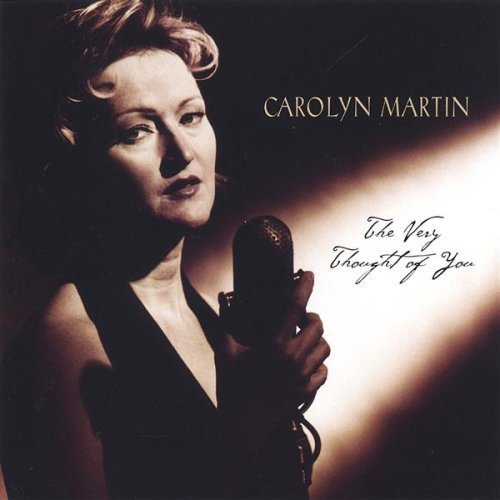Saša Večtomov - Bach: Cello Suites (2020) [Hi-Res]

Artist: Saša Večtomov
Title: Bach: Cello Suites
Year Of Release: 2020
Label: Supraphon a.s.
Genre: Classical
Quality: flac lossless / flac 24bits - 96.0kHz +Booklet
Total Time: 01:39:13
Total Size: 466 mb / 1.67 gb
WebSite: Album Preview
Title: Bach: Cello Suites
Year Of Release: 2020
Label: Supraphon a.s.
Genre: Classical
Quality: flac lossless / flac 24bits - 96.0kHz +Booklet
Total Time: 01:39:13
Total Size: 466 mb / 1.67 gb
WebSite: Album Preview
![Saša Večtomov - Bach: Cello Suites (2020) [Hi-Res]](https://www.dibpic.com/uploads/posts/2020-03/1585275984_sasa-vetomov-bach-cello-suites-2020-back.jpg)
Tracklist
01. Cello Suite No. 1 in G Major, BWV 1007: I. Prélude
02. Cello Suite No. 1 in G Major, BWV 1007: II. Allemande
03. Cello Suite No. 1 in G Major, BWV 1007: III. Courante
04. Cello Suite No. 1 in G Major, BWV 1007: IV. Sarabande
05. Cello Suite No. 1 in G Major, BWV 1007: V & VI. Menuet I & II
06. Cello Suite No. 1 in G Major, BWV 1007: VII. Gigue
07. Cello Suite No. 2 in D Minor, BWV 1008: I. Prélude
08. Cello Suite No. 2 in D Minor, BWV 1008: II. Allemande
09. Cello Suite No. 2 in D Minor, BWV 1008: III. Courante
10. Cello Suite No. 2 in D Minor, BWV 1008: IV. Sarabande
11. Cello Suite No. 2 in D Minor, BWV 1008: V & VI. Menuet I & II
12. Cello Suite No. 2 in D Minor, BWV 1008: VII. Gigue
13. Cello Suite No. 3 in C Major, BWV 1009: I. Prélude
14. Cello Suite No. 3 in C Major, BWV 1009: II. Allemande
15. Cello Suite No. 3 in C Major, BWV 1009: III. Courante
16. Cello Suite No. 3 in C Major, BWV 1009: IV. Sarabande
17. Cello Suite No. 3 in C Major, BWV 1009: V. Bourrée I & II
18. Cello Suite No. 3 in C Major, BWV 1009: VI. Gigue
19. Cello Suite No. 4 in E-Flat Major, BWV 1010: I. Prélude
20. Cello Suite No. 4 in E-Flat Major, BWV 1010: II. Allemande
21. Cello Suite No. 4 in E-Flat Major, BWV 1010: III. Courante
22. Cello Suite No. 4 in E-Flat Major, BWV 1010: IV. Sarabande
23. Cello Suite No. 4 in E-Flat Major, BWV 1010: V & VI. Bourrée I & II
24. Cello Suite No. 4 in E-Flat Major, BWV 1010: VII. Gigue
25. Cello Suite No. 5 in C Minor, BWV 1011: I. Prélude
26. Cello Suite No. 5 in C Minor, BWV 1011: II. Allemande
27. Cello Suite No. 5 in C Minor, BWV 1011: III. Courante
28. Cello Suite No. 5 in C Minor, BWV 1011: IV. Sarabande
29. Cello Suite No. 5 in C Minor, BWV 1011: V & VI. Gavotte I & II
30. Cello Suite No. 5 in C Minor, BWV 1011: VII. Gigue
31. Cello Suite No. 6 in D Major, BWV 1012: I. Prélude
32. Cello Suite No. 6 in D Major, BWV 1012: II. Allemande
33. Cello Suite No. 6 in D Major, BWV 1012: III. Courante
34. Cello Suite No. 6 in D Major, BWV 1012: IV. Sarabande
35. Cello Suite No. 6 in D Major, BWV 1012: V & VI. Gavotte I & II
36. Cello Suite No. 6 in D Major, BWV 1012: VII. Gigue
Recorded in the Organ Hall of the House of Artists (Rudolfinum) from 27 August to 4 September, 1984 Bach could hardly have imagined how popular his cycle of Six Suites for Cello Solo would become nearly 300 years after he finished writing them in Cothen. There are more than 200 existing historical and contemporary recordings of "informed" and "modern" interpretations —that tells it all. The music makes extraordinary demands on players' technical and interpretive ability and their overall comprehension. In the suites, Bach managed to create music that is highly innovative (it is worth noting that the cello was still developing at the time), and yet he retained his stylistic purity and comprehensibility. While these are formally dance suites, the architecture of some of them is more like that of a cathedral, in part thanks to the wealth of contrapuntal writing. They are a great challenge for everyone who has mastered the cello, Saga Vatomov included. His first teacher was his father (he studied in Paris with Piatigorsky and Fournier and with Casals's assistant Alexanian). The playing of the young Vatomov was then strongly influenced by Rostropovich's teacher Semyon Kozolupov at the Moscow Conservatoire and by Andre Navarra in Italy. Besides his solo career, he also excelled at playing chamber music (Czech Trio, City of Prague Quartet) and was an equally wonderful teacher. For the recording of the Bach suites that he made in Prague at the Rudolfinum in the summer of 1984, he prepared himself for several years. In 1980, for example, he played the whole cycle from memory at a single concert.
His recording can be characterised as having unmistakable beauty of tone, perfect intonation, and brilliant technique, but above all it is the deep comprehension of the "text" and the immediacy of the musicianship that make this recording something timeless and exceptional.
![Juan Torres Fernández - Azul Cristalino (2025) [Hi-Res] Juan Torres Fernández - Azul Cristalino (2025) [Hi-Res]](https://www.dibpic.com/uploads/posts/2025-12/1765496468_y7dxox9hmk6hb_600.jpg)

![Sam Most - But Beautiful (2025) [Hi-Res] Sam Most - But Beautiful (2025) [Hi-Res]](https://img.israbox.com/img/2025-12/12/n19esmi2zxvr716zw8citn0dv.jpg)





![Kenny Wheeler, Keith Jarrett, Dave Holland & Jack DeJohnette - Gnu High (1976/2025) [Hi-Res] Kenny Wheeler, Keith Jarrett, Dave Holland & Jack DeJohnette - Gnu High (1976/2025) [Hi-Res]](https://www.dibpic.com/uploads/posts/2025-12/1765627312_cover.jpg)